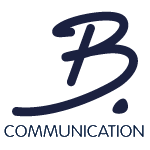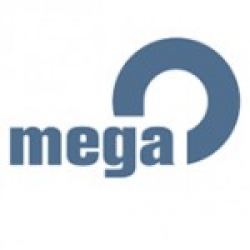on 1 June 2004
An ERP’s performance depends directly on it being used appropriately by the various people within the company. A context-sensitive online help system, developed using Mega tools, allows the end-users to understand each operation involved in using the ERP and its impact on the business processes.
“50% of ERP projects founder.” This statement by the Gartner Group is based on statistics collated two years ago, yet which still hold true today. One of the clearly-identified reasons for a project’s collapse lies in the end-users’ failure to adopt the tool, since leadership and support for the change are often underestimated in an ERP project. “If insufficient time is set aside for the learning curve, the ERP creates more limitations than benefits for the end-user. End-users lack confidence, become frustrated, frequently call the hotline and are not very effective or productive, which is particularly serious when they are in contact with clients,” explains Jean-Marc Huygevelde, associate director at Gartner.
Besides, implementing an ERP does not just consist of configuring the software package. Above all, it is a question of adapting it to the end-users’ ways of working and supporting them through the change. This is the price to be paid for the ERP to provide greater productivity and eventually generate the expected return on investment. This consequently begs the question of “How do we give end-users all the necessary support to help them better adopt the ERP and improve their productivity, and thereby improve the return on investment?”
In practical terms, this means observing the end-user’s workstation. This involves :
- a person (end-user)
- the operations to be performed (business processes)
- and the associated tools (ERP transactions).
For instance, when Areva T&D (formerly Alstrom T&D) implemented SAP R/3, the first step, as explained by Céline Foucher, Finance Process Director and head of the company’s Change Management project, consisted of “interviewing the people participating in the processes in order to define the organization. “Areva called on Mega’s modeling solution to describe the four levels of Areva’s organization: main processes, sub-processes, procedures and operations. The software package’s operation is then mapped to the business processes. “The first component is to define how the software package works and to publish the documentation. The second is to observe the workstations and align the business processes with the IT processes, so that the tool can be used wisely and in the right context,” summarizes Jean-Marie Zirano, pre-sales service director at Mega.
The result is a deliverable, developed with Mega’s help, consisting of an equivalence between the two sets of documentation: one provided by the ERP integrator that explains “how it works,” and one designed for the end-user that describes “what purpose it serves.” Mega’s technology helps to bridge the divide between the “how” and the “why” and achieve what is appropriately called “strategic alignment of the information systems.”
For each operation that end-users perform, the tool helps to model what they are doing and what they are using to do it, in other words the ERP transaction involved. This mapping leads to “correlation tables” built into the ERP using standard functions. After that, when end-users execute a transaction, they can access the operating mode through a context-sensitive online help system. This help system allows them to understand where their transaction lies within the process.
“That is what will enable them to be better prepared to tackle the changes, whether technical or organizational,” adds Jean-Marie Zirano.
At Areva, the modeling phase was repeatedly developed and validated by the appropriate staff. “The future end-users, particularly financial personnel, participated in the modeling and validation stages,” continues Céline Foucher. The result is a context-sensitive online help system in intranet format, integrated into SAP through the software package’s standard functions and localized in the end-user’s language: five languages are available (English, French, German, Spanish and Portuguese). No technical supplement is needed to roll out this deliverable.
The company Mondipackaging also underwent this modeling phase at its four European locations before it even selected its ERP.
“We started by defining the current organization, which led to a deliverable repository on the intranet,” explains Olivier Villebrun, IS Director at Mondipackaging France. “Then we repeated the operation, but this time to pinpoint: What do we dream of being able to do? How do we dream of organizing ourselves? “The project was broken down into business areas, with one reporter per area working with one representative per location. “The goal is for all the locations to feel the impact of the project, since it is truly a user-driven project,” insists Olivier Villebrun.
Making this documentation available to end-users will also allow the enterprise to be better prepared to tackle the changes, whether technical or organizational.
Mega’s offer: an ERP deployment accelerator
The enterprise architecture and the business process analysis are aimed at responding to two sets of problems:
- Help IT departments to guarantee general management that the functional and application architecture is optimized to provide a service rendered/cost ratio using modeling techniques
- Determine whether the information system is correctly aligned with the business processes and value chains.
Mega’s Enterprise Architecture and Business Process Analysis products include modeling and the creation of a repository for the organization. For each operation, a model is generated of what the end-users are doing and what they are using to do it, in other words, the ERP transaction involved, how they are doing it (procedures) and how this operation fits into the value chain. Based on this repository, Mega generates a deliverable for the end-user in intranet format, which establishes a link between the documentation delivered by the integrator (operating mode of the transaction) and the service that it represents. The deliverable can be used in multiple areas of the project, as part of implementing the change or in training.

